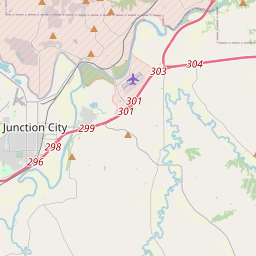In Memory of Civil War Horses and Mules
Historical marker location:






April 12, 1861: The Civil War begins with the Confederate attack on Fort Sumter, located in South Carolina's Charleston Harbor.
April 15, 1861: President Abraham Lincoln issues a call for 75,000 volunteers to serve in the Union Army to suppress the rebellion.
May 24, 1861: The first major land battle, known as the First Battle of Bull Run (or First Battle of Manassas), takes place in Virginia. It ends in Confederate victory.
September 17, 1862: The Battle of Antietam in Maryland becomes the bloodiest single-day battle in American history, with heavy casualties on both sides. The Union forces, commanded by General George McClellan, manage to halt Confederate General Robert E. Lee's advance into Union territory.
January 1, 1863: President Lincoln issues the Emancipation Proclamation, declaring that all slaves in Confederate-held territories are to be set free. However, the proclamation does not immediately free all slaves in the United States.
July 1-3, 1863: The Battle of Gettysburg in Pennsylvania takes place, resulting in a significant Union victory and inflicting heavy casualties on Confederate forces. It marks a turning point in the war.
November 19, 1863: President Lincoln delivers the Gettysburg Address, emphasizing the principles of liberty, equality, and the preservation of the Union.
April 9, 1865: General Robert E. Lee surrenders to Union General Ulysses S. Grant at Appomattox Court House in Virginia, effectively ending the Civil War.
April 14, 1865: President Lincoln is assassinated by John Wilkes Booth while attending a play at Ford's Theatre in Washington, D.C.
May 10, 1865: Confederate President Jefferson Davis is captured, signaling the collapse of the Confederate government.
December 6, 1865: The Thirteenth Amendment to the United States Constitution is ratified, officially abolishing slavery throughout the country.
While this timeline provides an overview of key events, it is important to note that the Civil War spanned over four years, from 1861 to 1865, and encompassed numerous battles, campaigns, and political developments that shaped the course of American history.
The first woman mayor in the United States, Susanna Salter, was elected in Argonia, Kansas in 1887.
During the 19th century, Geary County became a significant transportation hub due to its location along the Smoky Hill Trail, which was used by pioneers and traders traveling westward. The establishment of Fort Riley in 1853 further contributed to the county's growth and development. The military installation played a vital role in westward expansion, serving as a staging point for various military campaigns and providing economic stimulus to Geary County.
By the late 1800s, Geary County's economy diversified, with the advent of agriculture, particularly wheat farming. The county quickly became known for its fertile soil and agricultural productivity. Additionally, the construction of railroads in the late 19th century boosted trade and encouraged further settlement in the area.
Geary County experienced significant growth during the 20th century, largely due to the military presence and the establishment of Camp Forsyth (later renamed Camp Funston) near Fort Riley for World War I training. The expansion of Fort Riley and the involvement of the military in subsequent wars brought prosperity and opportunity to the area.
Today, Geary County continues to be shaped by its military heritage and its vibrant community. It is home to a diverse population, including active-duty military personnel, veterans, and civilians. The county's history is preserved through various historical sites and museums, showcasing its importance in the settlement of the American West and the role it has played in national defense.
Geary County Timeline
This timeline provides a concise overview of the key events in the history of Geary County, Kansas.
- 1855 - Geary County is established as an administrative division of Kansas Territory.
- 1860 - Population in Geary County reaches 623.
- 1873 - Junction City is incorporated as a city.
- 1882 - Fort Riley established and becomes a major military base in the area.
- 1901 - Construction of the Junction City to Fort Riley streetcar line begins.
- 1930 - Population in Geary County increases to over 10,000.
- 1940 - Geary County Courthouse is built in Junction City.
- 1950 - Construction of Milford Dam and Reservoir is completed, providing flood control and recreational opportunities.
- 1966 - Geary County Historical Society is founded to preserve and promote the county's history.
- 1988 - Bill Snyder becomes head coach of the Kansas State University football team, located in Geary County.
- 2010 - Geary County celebrates its 150th anniversary.